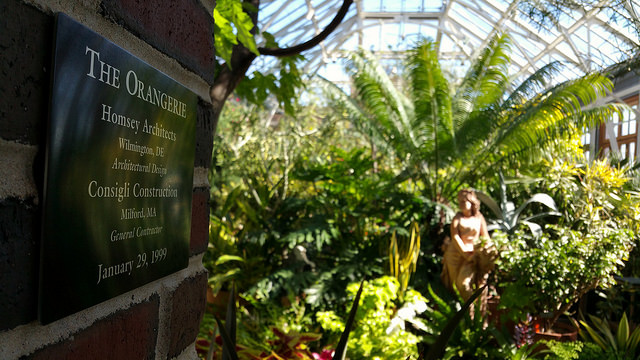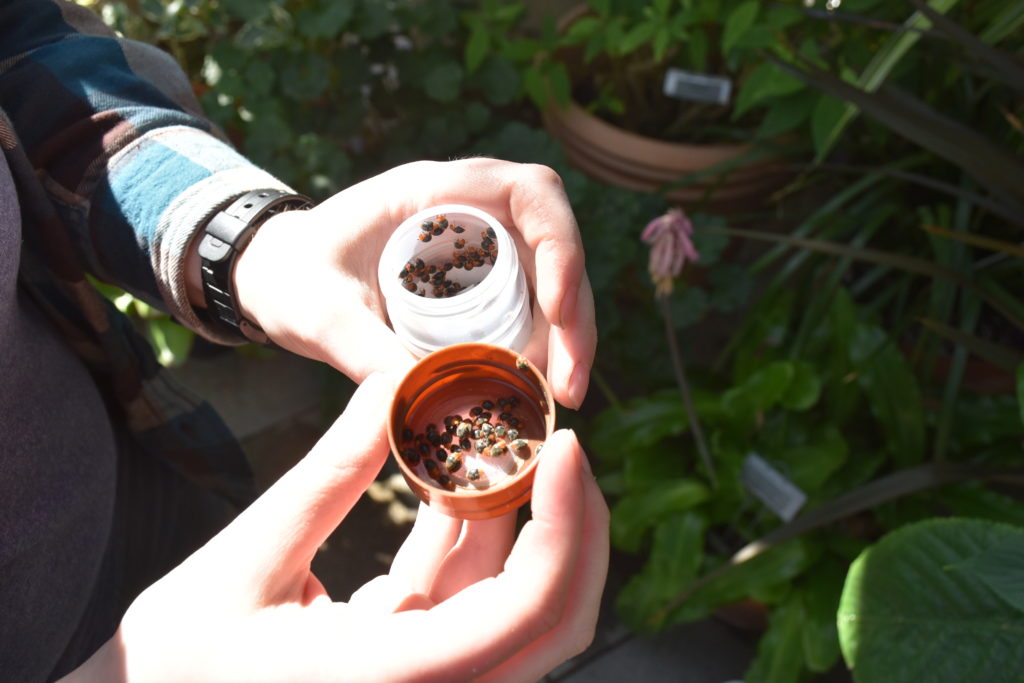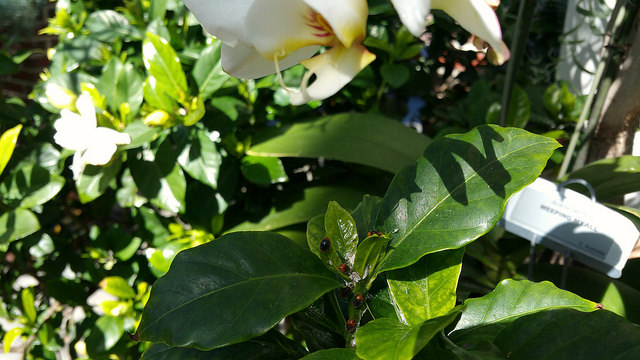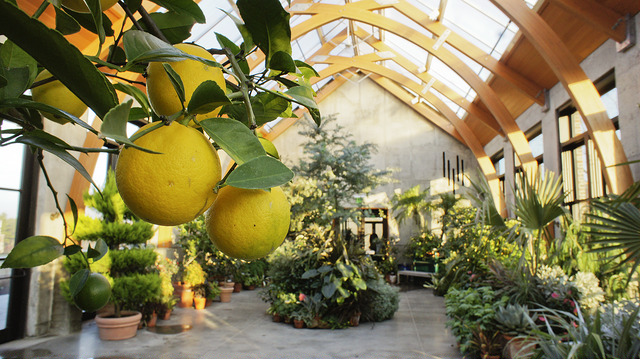We appreciate the balance of nature in all of our gardens, indoors and out, and admire the way bees and flowers benefit each other; how worms aerate the soil which helps plants; how one insect can be kept in line by another. But that balance is tipped in indoor gardens like the Orangerie and Limonaia. Natural predators, which keep the insect populations in check when the collections are outside, are not present in sufficient quantities indoors in the winter. Sometimes a little intervention is just what’s needed to bring pest populations back into alignment.
Each fall, prior to returning the collections to the conservatories, the staff conducts rigorous scouting and pest control removal to reduce pest populations. In spite of our fastidious attention to this task inevitably some pests ride in undetected. Scale, mealybugs, spider mites and aphids are but a few of the common insect problems we face. As the days grow warmer and longer the pest populations rise and our hand removal, and spaying with water is simply insufficient. Rather than bring out the chemical we bring in good bugs!
Last week we received a shipment of beneficial insects and released them in areas where they could satisfy their appetites on the soft-bodied pests while simultaneously protecting our collection.
The Cryptolaemus montrouzieri, a relative of the beloved Ladybug, arrived in small containers, reminiscent of a small spice bottle. Inside dozens of beetles clamored for the exit.
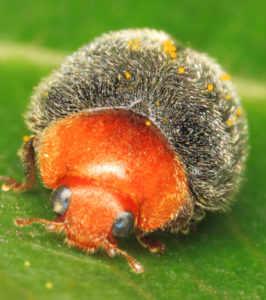 These Crypt Beetles are also called Mealybug Destroyers, named after their favorite food, mealybugs. They are native to Australia and used worldwide as a biological control to reduce mealybug populations. This buggy workforce will multiply in the conservatories where both adults and larvae will feed on pests – mealybugs first – and aphids and scale when the mealybugs are well controlled.
These Crypt Beetles are also called Mealybug Destroyers, named after their favorite food, mealybugs. They are native to Australia and used worldwide as a biological control to reduce mealybug populations. This buggy workforce will multiply in the conservatories where both adults and larvae will feed on pests – mealybugs first – and aphids and scale when the mealybugs are well controlled.
Last week, we brought the beetles to their new home, the Orangerie, where we placed them on plants where mealybugs were snacking on our plants. At New England Botanic Garden at Tower Hill, plants are our living collection. We value them the way an art museum would gorgeous paintings. We care for beautiful and interesting species to inspire visitors to bring more plants into their lives. And we don’t look fondly on pests that weaken our stars!
Some of the Crypt Beetles took flight in search of greener pastures on the other side of our glass house. But many followed our guidance and went straight for the mealybug buffet, like those on the coffee plant in the above picture.
Elsewhere in the conservatories, we have Ladybug larvae, which came in on their own, helping to keep the aphids in check. To assist in this important task, Green Lacewing (Chrysoperla rufilabris) eggs and larvae were deployed among the collections last week. The larvae are voracious feeders, sometimes called aphid lions but are also happy to tackle mealybug and soft-bodied scale when aphids are in short supply.
So as you enter our conservatories and appreciate the wonder of mid-winter blooms and lush foliage, take a closer look and you may find our tiny helpers working on our behalf and yours to keep our plants healthy and strong.

